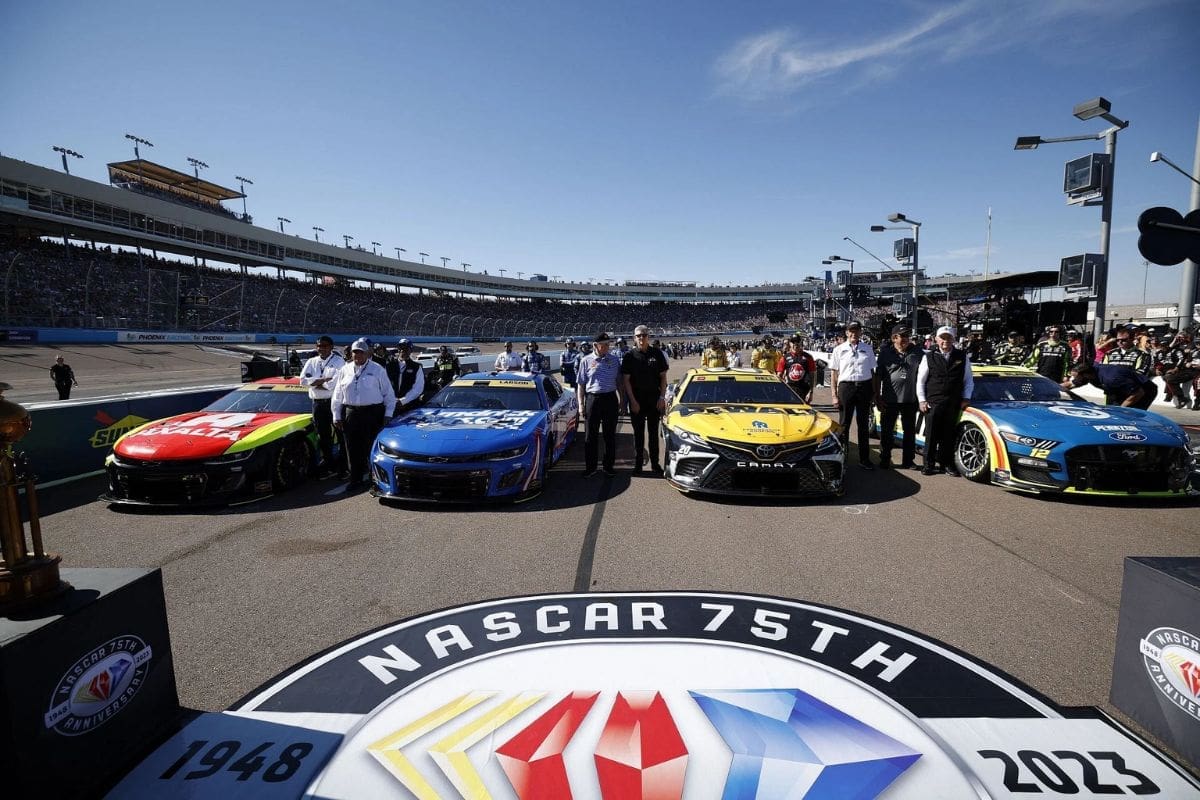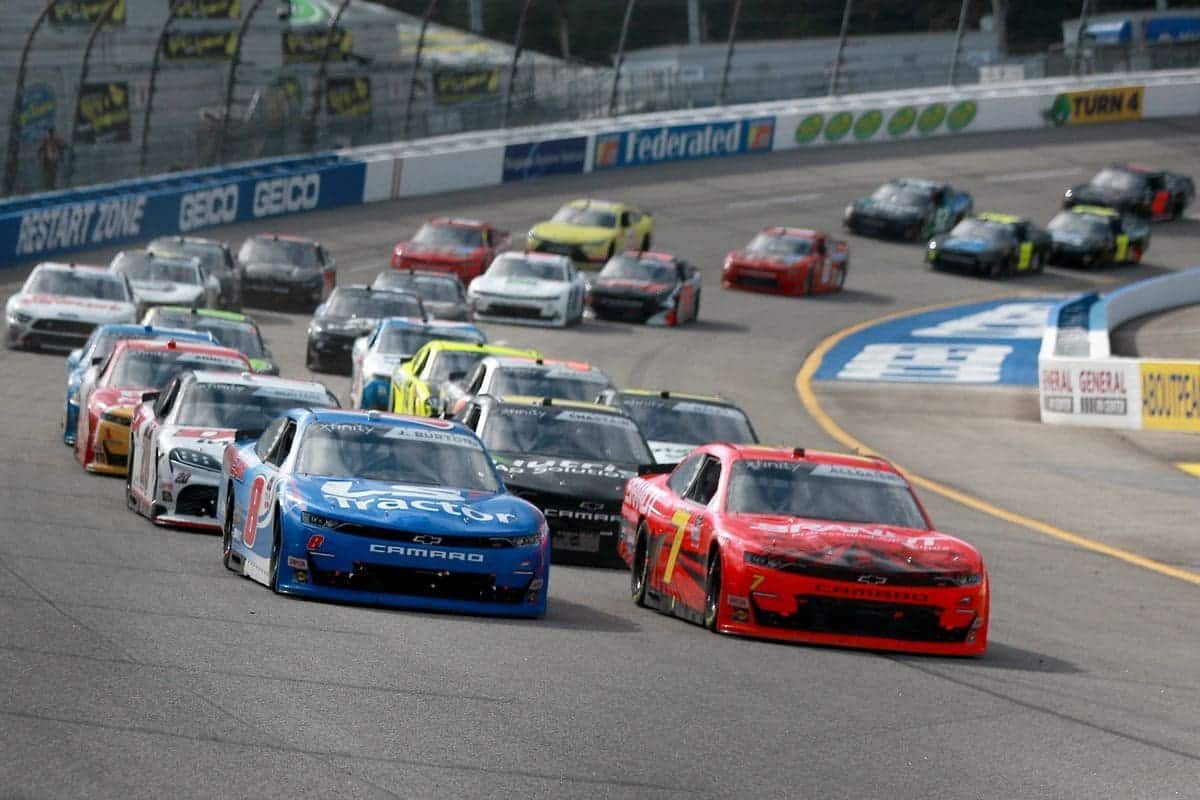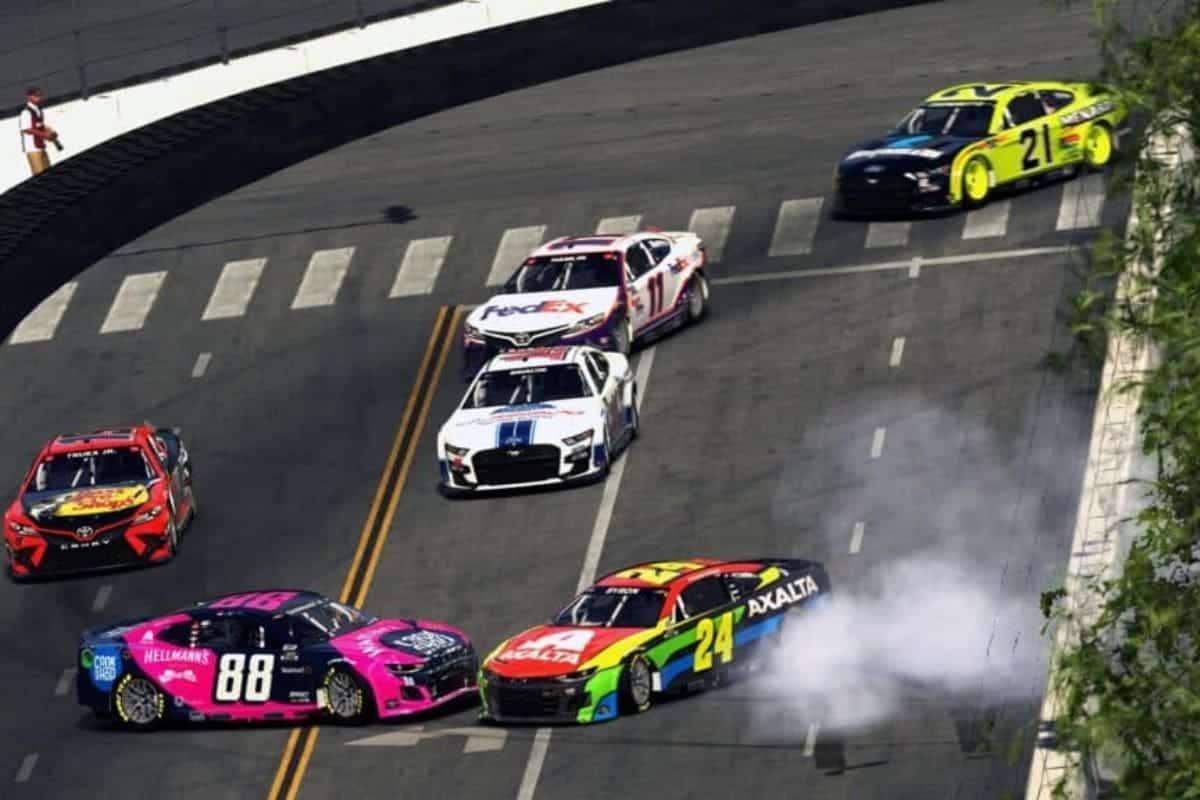5 Cars That Dominated NASCAR: Throughout NASCAR’s storied history, a select group of cars has risen to legendary status, each leaving an indelible mark on the sport with their unparalleled performance, engineering excellence, and competitive dominance. From the Chevrolet Impala’s reign in the early 21st century to the Buick Regal’s transformative impact in the 1980s, and the Ford Galaxie’s era-defining success in the 1960s, these vehicles have set new standards on the racetrack. The Chrysler 300 series, with its mid-1950s breakthroughs, and the revolutionary yet controversial Dodge Charger Daytona of the late 1960s, have further shown the importance of innovation and power in NASCAR. Together, these iconic models have not only achieved numerous victories but have also driven the evolution of automotive technology and competitive strategies in motorsports, cementing their legacy as titans of NASCAR.
Chevrolet Impala
The Chevrolet Impala holds a significant place in NASCAR history, having been a dominant force in both the Monster Energy Cup Series and the Xfinity Series from 2007 to 2012. As a model manufactured by Chevrolet, the Impala’s introduction to NASCAR marked a pivotal moment in the sport, replacing the Chevrolet Monte Carlo and bringing with it a new era of performance and competition.
The Impala’s entry into NASCAR came at a time when the sport was undergoing significant changes. Its robust design and engineering made it an immediate favorite among teams and drivers, who quickly adapted to its handling and power. The transition from the Monte Carlo to the Impala was seamless, thanks to Chevrolet’s commitment to maintaining high standards of performance and reliability in their vehicles. The Impala’s debut was met with high expectations, and it did not disappoint, quickly proving itself on the track.
One of the key factors behind the Impala’s success in NASCAR was its versatility and adaptability. The car’s design allowed it to perform exceptionally well on a variety of tracks, from the high-speed superspeedways to the tight, technical short tracks. This versatility made it a preferred choice for many top NASCAR teams, who appreciated the Impala’s ability to consistently deliver strong performances across different racing conditions.
The Impala was also favored by some of the greatest drivers in NASCAR history, including Dale Earnhardt Sr., Dale Earnhardt Jr., and Jeff Gordon. These legendary drivers trusted the Impala for its reliability and competitive edge, helping to solidify its reputation in the sport. Dale Earnhardt Jr. and Jeff Gordon, in particular, achieved numerous wins and top finishes while driving the Impala, showcasing its skills and contributing to its storied legacy in NASCAR.
In 2013, the Chevrolet Impala was replaced by the Chevrolet Camaro in the Xfinity Series and the Chevrolet SS in the Monster Energy NASCAR Cup Series. Despite its relatively short tenure in NASCAR, the Impala left a mark on the sport. Its impact is still felt today, as it paved the way for the future models that continue to carry Chevrolet’s legacy in racing.
The Chevrolet Impala played a crucial role in NASCAR from 2007 to 2012, leaving behind a legacy of excellence and performance. Favored by some of the sport’s most iconic drivers, the Impala’s impact on NASCAR is remembered as a time of great achievement and evolution for Chevrolet. As the sport continues to evolve, the Impala remains a symbol of Chevrolet’s commitment to racing excellence and innovation.

Buick Regal
The Buick Regal has cemented its legacy in NASCAR history as a powerhouse of performance and innovation. By 1955, the Regal had already amassed an impressive 63 wins, establishing itself as a formidable competitor on the race track. However, it was in the early 1980s that the Buick Regal truly dominated NASCAR, showcasing its superiority and influencing the design and strategy of competing manufacturers.
The year 1981 marked a turning point for the Buick Regal in NASCAR. Multiple racers, including legends like Darrell Waltrip and Bobby Allison, drove the Regal to numerous first-place finishes, demonstrating the car’s exceptional engineering and performance capabilities. Waltrip’s skills behind the wheel of the Regal helped him secure the NASCAR Winston Cup Championship in 1981 and 1982, further cementing the car’s status as a top contender in the sport.
Buick’s dominance continued into 1982, a year that saw the Regal’s competitors scrambling to keep up. Ford made significant alterations to their Thunderbird, and Chevrolet upgraded their Monte Carlo, both in efforts to match the performance of the Regal. These changes present the impact the Regal had on the sport, pushing other manufacturers to innovate and improve their designs to remain competitive. The Regal’s success on the track forced a shift in the competitive landscape of NASCAR, highlighting Buick’s influence and the car’s formidable presence.
To capitalize on its racing success and bring a taste of the track to consumers, Buick expanded the Regal into a full model line. From 1982 to 1987, Buick introduced the Buick Regal Grand National, Regal T-Type, and the limited-production Buick GNX. These models were designed to capture the performance and spirit of the NASCAR-winning Regal, offering enthusiasts a powerful and stylish option that mirrored the capabilities of their racing counterparts. The Grand National, in particular, became iconic for its turbocharged V6 engine and sleek, aggressive design, earning a place in automotive history as one of the most celebrated muscle cars of its time.
The Regal’s impact on NASCAR and the automotive industry was profound. Its success on the race track showcased Buick’s engineering excellence and commitment to performance, while its consumer models brought a new level of excitement to the brand’s lineup. The introduction of the Grand National, T-Type, and GNX models demonstrated Buick’s ability to translate racing success into commercially successful and highly desirable vehicles.
Ford Galaxie
The Ford Galaxie has left a lasting mark on NASCAR, contributing significantly to Ford’s storied history in the sport. Although the Chevy Monte Carlo secured numerous victories, there was a period when Ford reigned supreme in NASCAR. Between 1963 and 1969, Ford won the NASCAR Manufacturers‘ Championship consecutively, a testament to the prowess and dominance of the Ford Galaxie on the racetrack.
One of the key factors behind the Galaxie’s success was its powerful 7.0-liter V8 engine. This massive engine was designed to compete head-to-head with Dodge’s Hemi engines, ensuring that Ford remained competitive in an era where horsepower and speed were paramount. The Galaxie’s robust engine performance and durable construction made it a favorite among many top NASCAR drivers of the time.
Legendary drivers such as Dan Gurney and Fred Lorenzen piloted the Ford Galaxie to numerous victories, solidifying the car’s reputation for speed and reliability. Fred Lorenzen, in particular, became synonymous with the Galaxie, earning the nickname “Fearless Freddy” for his daring driving style and numerous wins. Lorenzen’s success with the Galaxie included prestigious victories like the 1965 Daytona 500, further cementing the car’s place in NASCAR history.
Despite some controversy surrounding the Galaxie’s dominance, particularly regarding its engineering and performance advantages, the car delivered an impressive total of 199 wins for Ford. This period of success was not without its challenges, as the competition was fierce, and technological advancements were rapidly changing the landscape of NASCAR. However, the Galaxie’s consistent performance and numerous victories highlighted Ford’s commitment to excellence and innovation in motorsports.
The impact of the Ford Galaxie on NASCAR extended beyond its time on the track. It helped establish Ford as a dominant force in the sport, influencing the design and development of future racing cars. The Galaxie’s success also contributed to the broader popularity of NASCAR, drawing in fans who marveled at the thrilling races and the cutting-edge technology of the vehicles.

The Ford Galaxie played a pivotal role in Ford’s domination of NASCAR during the 1960s. Its powerful 7.0-liter V8 engine and the skill of drivers like Dan Gurney and Fred Lorenzen led to a string of victories that secured Ford’s place at the top of the sport. The Galaxie’s legacy is marked by its 199 wins and its enduring influence on the design and engineering of NASCAR vehicles. Through its triumphs and innovations, the Ford Galaxie helped shape the future of stock car racing and left an unforgettable mark on NASCAR history.
Chrysler 300C and 300B
In the mid to late 1950s, Chrysler made a significant impact on NASCAR, establishing itself as a powerhouse in the sport with its formidable Chrysler 300 series. This period is often remembered for Chrysler’s dominance on the racetrack, largely due to the exceptional performance of the Chrysler 300B and the skill of drivers like Elmer Carl and Tim Flock.
The Chrysler 300B was a game-changer in NASCAR. Its powerful engine and advanced engineering made it a standout vehicle in a field that was becoming increasingly competitive. The 300B was equipped with a 5.8-liter HEMI V8 engine, capable of producing an impressive 355 horsepower, which was extraordinary for its time. This exceptional power allowed the 300B to outpace many of its rivals, earning it a reputation as one of the most formidable cars on the track.
Elmer Carl was one of the drivers who harnessed the power of the Chrysler 300B to secure consistent wins in NASCAR races. His victories showcased the car’s capabilities and solidified its status as a top competitor. Carl’s success was a testament to both his driving skill and the engineering excellence of the 300B, making him a notable figure in Chrysler’s racing legacy.
Tim Flock, another prominent NASCAR driver of the era, further exemplified Chrysler’s dominance. Flock had a remarkable 18 race wins in the 1955 championship, a record that highlighted both his talent and the superior performance of the Chrysler 300B. His achievements that year were instrumental in establishing Chrysler’s legacy in NASCAR, demonstrating that the 300B was a car to be reckoned with.
The power and performance of the Chrysler 300B were so significant that they led to controversies on the track. In one notable incident, a driver was forced to withdraw from a race after being accused of cheating due to the car’s extraordinary speed and handling. Although nothing was proven, the incident highlighted just how far ahead the Chrysler 300B was compared to its competitors.
Chrysler’s influence on NASCAR during the mid to late 1950s extended beyond just race wins. The success of the Chrysler 300 series helped elevate the profile of the sport, attracting new fans and increasing the popularity of NASCAR events. The technological advancements and engineering innovations of the 300B set new standards for performance in stock car racing, pushing other manufacturers to improve their own vehicles in order to keep up.
Chrysler’s impact on NASCAR in the mid to late 1950s was profound and far-reaching. The Chrysler 300B, with its powerful HEMI V8 engine and advanced design, dominated the racetrack and helped establish Chrysler as a leading force in the sport. Drivers like Elmer Carl and Tim Flock showcased the car’s capabilities through their numerous victories, while the controversies surrounding its performance highlighted its superiority. Chrysler’s contributions during this era not only shaped the future of NASCAR but also left an enduring legacy in the world of motorsports.
Dodge Charger Daytona
The Dodge Charger Daytona stands as one of the most iconic and controversial cars in NASCAR history, known for its unparalleled speed and innovative design. Introduced in 1969, the Charger Daytona was designed to dominate the racetrack and indeed, it obliterated the competition with its advanced aerodynamics and powerful engines.
The Daytona was a striking two-door vehicle, instantly recognizable by its enormous 23-inch-tall rear wing, which gave it the appearance of a car poised for flight. This aerodynamic feature was not just for show; it was a product of cutting-edge design that involved collaboration with NASA. The rear wing, along with the elongated nose cone, significantly reduced drag and provided exceptional stability at high speeds, making the Daytona a formidable presence on the track.
Under the hood, the Daytona boasted a choice of powerful engines. It came equipped with either the legendary 7.0-liter HEMI V8 or the 7.2-liter Magnum V8, both of which delivered astounding performance. These engines propelled the car to incredible speeds, and in 1969, the Charger Daytona set a remarkable top speed of 321 km/h (199 mph), a feat that showcased its engineering excellence.
However, the Daytona’s dominance and technological edge were not without controversy. Its unprecedented performance led to claims of an unfair advantage, with many in the racing community feeling that the car’s design pushed the boundaries of what was acceptable in competition. The outcry over its superiority on the track eventually led to the car being deemed too powerful for NASCAR. In response to these concerns and the competitive imbalance it created, the Charger Daytona, along with its sibling, the Plymouth Superbird, was banned from NASCAR competition.

The ban did little to diminish the legacy of the Dodge Charger Daytona. Instead, it cemented the car’s place in motorsports history as a symbol of innovation and the pursuit of speed. The Daytona’s brief but spectacular stint in NASCAR highlighted the impact that engineering and aerodynamics could have on racing performance. Even after its ban, the lessons learned from the Daytona’s design continued to influence automotive engineering and race car development.
News in Brief: 5 Cars That Dominated NASCAR
The legacy of these iconic cars in NASCAR history is a testament to the relentless pursuit of innovation, power, and performance that defines the sport. The Chevrolet Impala, Buick Regal, Ford Galaxie, Chrysler 300 series, and Dodge Charger Daytona each brought unique strengths and groundbreaking advancements to the racetrack, setting new benchmarks and pushing the boundaries of what was possible in stock car racing. T
heir dominance across different eras not only secured numerous championships and victories but also inspired continual evolution in car design and engineering. These vehicles have become synonymous with the golden eras of NASCAR, symbolizing the competitive spirit and technological progress that continue to drive the sport forward. Their storied pasts and lasting impact on the automotive world ensure that their legacies will endure as some of the most celebrated chapters in NASCAR history.
Also read: Carson Hocevar Braces for Daytona 500 Debut: Overwhelming Pressure?

